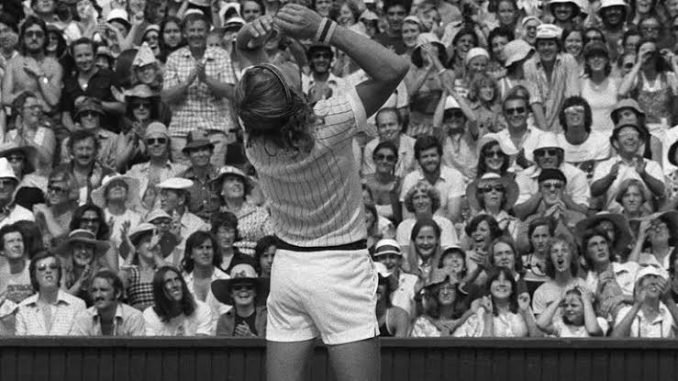
“My greatest point is my persistence.” Eleven Grand Slam titles and five Wimbledon titles were won by Bjorn Borg. It had been forty years since his last All England Club championship.
Bjorn Rune Borg, the Swedish tennis legend, revolutionized and elevated tennis to a new plane. His strong stroke play from the baseline transformed the game, making him a global celebrity and idol.
Borg was the only child of Rune and Margaretha Borg, and was born on June 6, 1956, in Stockholm, the capital of Sweden.
He is considered as one of the best players and professionals to have ever graced the sporting world by both onlookers and other tennis players.
Between 1974 and 1981, he won 11 Grand Slam singles titles in total. He won five Wimbledon titles and six at the French Open, all with his vintage wooden Donnay racket!
Lennart Bergelin, Sweden’s Davis Cup captain, saw Borg’s exceptional athleticism and endurance, and within a year, he was competing at the highest level for his nation in tennis.
In his Davis Cup singles debut, 15-year-old Borg prevailed, defeating New Zealand veteran Onny Parun in five sets. Later that year, he won the Wimbledon junior singles championship by defeating Buster Mottram of Britain.
His volleying abilities, powerful groundstrokes, serve, and two-handed backhand were exceptional. For a young Borg, it was time to step up to elite-level tennis.
It was just a matter of time until he could make the short transition from the red soil to the immaculately groomed green grass of the All England Club. Barely eighteen, he had won his first French Open championship.
In the final, he defeated Ilie Nastase 6-4 6-2 9-7 to win the title without dropping a set. That happened in 1976.
“We’re playing tennis, and he’s playing something else,” the Romanian stated.
A year later, Borg returned to Wimbledon, but only after surviving five sets against Jimmy Connors in the balmy mid-afternoon sun. Borg counterpunched his way to a 3‑6 6‑2 6‑1 5‑7 6‑4 win in the year of Wimbledon’s centenary celebration and Queen Elizabeth’s Silver Jubilee.
Coach Bergelin of Borg stated, “I think Connors had to win if he had kept going on, playing more net.” “When he stayed on the baseline, to play Borg that way, it was a mistake.”
When Borg and Connors faced each other again in 1978, the Swede’s victory was more easier to predict because of his flawless serving and outstanding comeback. He won 6-2 6-2 6-3.
Regarding Borg’s haughty performance, Bergelin could hardly contain himself. “This is the best big match he ever played,” Borg remarked, adding that he had played better in “a few little matches.”
In the 1979 final, Borg maintained his dominance at Wimbledon by rallying from behind to defeat big server Roscoe Tanner, 6-7 (4-7) 6-1 3-6 6-3 6-4.
Tanner, a left-hander, approached the match with an all-or-nothing mentality. He knew he could cause difficulty for the unstoppable Borg, and he had a game meant for the turf.
“Really I thought I had a great chance against Bjorn, because I’d beaten him earlier that year in Philadelphia,” Tanner recalled. “I was aware that I had a decent chance if I played to the best of my abilities, particularly on grass. My feelings would have been different if I had played him on clay.”
But on a cloudy, windy afternoon, Borg whipped 32 easy passing victories, and that finally got to Tanner.
In addition to being remembered as one of the best Wimbledon finals ever, the 1980 match marked the beginning of Borg’s decline as he faced up against 21-year-old American upstart John McEnroe.
McEnroe and Borg resembled the unstoppable force engulfing the immovable object. It didn’t let down and had all the makings of an instant classic. The fourth set was going to go to a tie-break since the Swede was leading by two sets to one. One of the best tennis sequences ever witnessed transpired.
McEnroe saved five match points over the next 34 games in what would become known as The War of 18-16 before pushing an instant classic into a deciding set.
It took three hours and fifty-three minutes of intense action, but Borg eventually prevailed 1-6 7-5 6-3 6-7 (16-18) 8-6, winning 19 straight serve games.
Leave a Reply